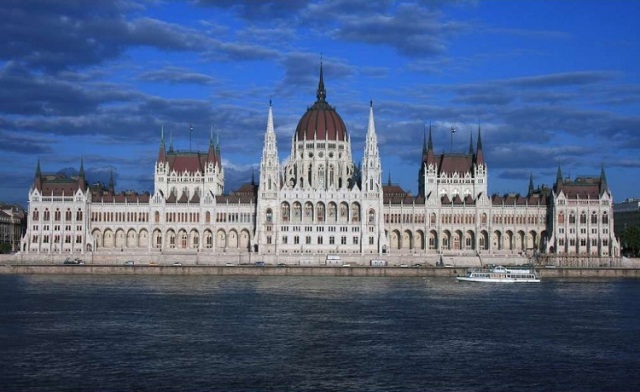Hungary is a country situated in east-central Europe, alongside Austria and Slovakia. If you want to explore the place further, just check out some fun & interesting facts about it, given here.
Facts About Hungary
Hungary, a less explored European country, is fast gaining the attention of the vacationers throughout the world. Situated in the east-central Europe, the country boasts of a rich historical past, which is evident in the numerous World Heritage Sites adorning its interiors. The capital of this beautiful country is Budapest and is the seat of the parliamentary democracy government. Hungary is bordered by Slovakia, Austria, Croatia, Slovenia and Romanian. It is the place where you will find 2000-year-old Roman ruins and 400-year-old Turkish monuments standing side by side, enchanting you with equal splendor. It would also interest you to know that Hungary has also been a part of the European Union since May. If you get tired roaming around Hungary’s numerous tourist attractions, just visit a thermal spring and feel all the mundane tensions of life ebbing away from your mind. With this article, we intend to acquaint you with the fun and interesting side of Hungary.

Image: artorusrex@flickr
Fast Facts
Continent: Europe
Area: 93,030 km2
Capital: Budapest
Population: 9,942,000 (2012)
Currency: Hungarian forint
Official Languages: Hungarian
Independence Day: March 15, 1849
Calling Code: 36
Type Of Government: Parliamentary republic
Fun & Interesting Facts about Hungary
- The official name of Hungary is ‘Hungarian Republic’.
- Hungary is situated in East-Central Europe and shares its borders with Austria, Slovakia, Ukraine, Romania, Serbia, Croatia and Slovenia.
- The official language of Hungary is Hungarian and its currency is Hungarian Forint - HUF.
- The main religion followed in Hungary is Roman Catholicism, followed by Calvinist, Lutheran and Greek Catholicism.
- Hungary follows republican form of government.
- The largest city in Hungary, Budapest, is also its capital and its cultural, economic and industrial center.
- Hungary is one of the oldest countries in Europe, founded way back in the year 896.
- Hungarian language is also known as Magyar and is the direct descendent of the language spoken by the Huns, who gave the country its name.
- Asian genes form only a tiny percentage of the Hungarian population.
- The Kingdom of Hungary was one of the largest states in Europe, around 1000 CE.
- Hungary was amongst the first communist-era countries that opposed the Soviet regime during the Cold War.
- The Hungarian Grand Prix of 1986 was the first Formula One race to take place behind the Iron Curtain.
- In 1989, Hungary became the first communist-bloc country to open its borders with Western Europe.
- As per EU statistics, Hungary has the highest death rate by cancer in Europe and also the highest female suicide rate.
- The noiseless match, Rubik's cube, holography, ballpoint pen, theory of the hydrogen bomb, BASIC programming language and the krypton electric bulb were invented by Hungarians only.
- Hungary has one of the most important thermal spring cultures in the entire Europe. There are as many as 1,500 spas in the country, adorned with Roman, Greek and Turkish architecture. Hungary also boasts of 450 public baths.
- Numerous established composers, like Béla Bartók, Zoltán Kodály and Franz Liszt, belonged to Hungary.
- The Great Hungarian Plain is the breeding ground and haven for a large number of migratory birds from around the world.
- Till 2007, 13 Hungarians had received a Nobel Prize.
- Hungary has won the sixth highest number of Summer Olympic gold medals.
- Hungary has two major rivers: Danube and Tisza. The other rivers that run in this country are Raba and Drava.
- Here, you have bank notes that start from 200, 500, 1000, 2000, 5000, 10,000 and end at 20,000.
- In 1946, Hungary issued banknotes of a face value of 1,000,000,000,000,000,000 (one quintillion pengo) - the world's highest denomination ever.
- March 15th is celebrated as the Revolution and Independence against the Habsburg Monarchy.
- The life expectancy in Hungary is sadly, decreasing. For males, the life expectancy is between 67-68 years, whereas for women, it is between 76-77 years.
- Hungary is home to some of the most important natural sources such as fertile alluvial soils, arable land, coal, bauxite, manganese, uranium, lignite, natural stones and natural gas.
- Approximately 18% of Hungary is forested with beech, lime, oak and other deciduous trees.
- Ducks, storks and herons are indigenous to this country.
- Germany is Hungary’s largest economic partner.
See also
More from iloveindia.com
- Home Remedies | Ayurveda | Vastu | Yoga | Feng Shui | Tattoos | Fitness | Garden | Nutrition | Parenting | Bikes | Cars | Baby Care | Indian Weddings | Festivals | Party ideas | Horoscope 2015 | Pets | Finance | Figures of Speech | Hotels in India : Delhi | Hyderabad | Chennai | Mumbai | Kolkata | Bangalore | Ahmedabad | Jaipur
- Contact Us Careers Disclaimer Privacy Policy Advertise With Us Lifestyle Sitemap Copyright iloveindia.com. All Rights Reserved.







